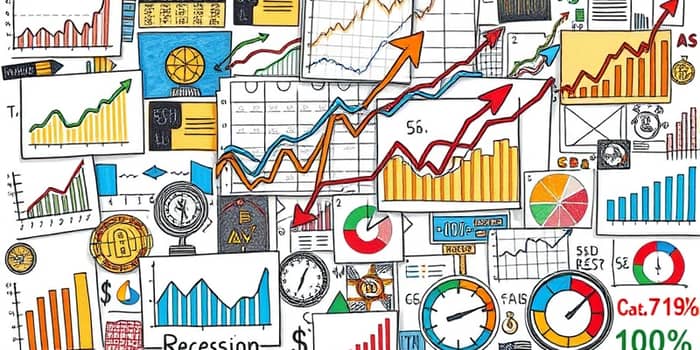
Recessions can ripple through every corner of society, affecting jobs, savings, and plans. Spotting warning signs early helps individuals, businesses, and policymakers brace for impact. This article explores the breadth of classical, quantitative, and unconventional signals economists and market watchers track to anticipate downturns.
We rely on data trends, market behavior, and sentiment measures to build a clear picture of looming risks. Tracking multiple indicators in tandem reduces uncertainty and deepens insights.
The National Bureau of Economic Research (NBER) defines a recession as a significant decline in economic activity that is spread across the economy and lasts more than a few months. Unlike the simple rule of thumb—two consecutive quarters of negative GDP—the NBER examines a broad set of data to determine both depth and duration.
By adopting a holistic approach, the NBER accounts for factors that a narrow definition might miss, such as labor market health, industrial output, and consumer behavior.
Leading and lagging statistics form the backbone of recession analysis. Below are six core indicators that reveal shifts in economic momentum.
Tracking these metrics over time reveals the interplay between consumer behavior, business investment, and government policy.
Markets often anticipate downturns before economic data confirm them. The following four metrics warrant close attention:
Market signals can be volatile, so it’s crucial to confirm them with fundamental data before drawing conclusions.
Businesses adjust swiftly when they foresee tougher conditions. Key corporate indicators include:
Early reductions in capital spending can cascade, tipping an economic slowdown into a full recession.
When consumers pull back, growth slows. Sentiment gauges and retail footprints offer insights beyond sales figures alone.
Consumer confidence surveys track shifts in spending intentions. Recent 2025 data point to uncertainty driven by inflation and policy debates. Meanwhile, retail pricing strategies—such as major chains adjusting promotions or price hikes—signal confidence levels at the frontline.
Analyzing foot traffic, online search trends, and discretionary spending patterns provides additional context on household resilience or vulnerability.
Monetary and fiscal policy shifts can either cushion or accelerate economic cycles. For example, an abrupt pivot by the Federal Reserve from tightening to easing can alter credit conditions rapidly.
Fiscal dynamics—such as projected government spending cuts in 2026–27—add another layer of complexity. Under-the-radar metrics, though anecdotal, sometimes foreshadow broader shifts. Examples include niche indicators like professional school application rates or specialty service demand.
Economists often monitor four core metrics together to confirm recession signals. The following table summarizes their status as of mid-2025:
No single metric can perfectly time a recession. Combining labor, output, market, and sentiment indicators offers the deepest insights into emerging risks. Being aware of classical and unconventional signals helps stakeholders adapt strategies and protect resources.
Ultimately, forecasting downturns requires humility and vigilance. By avoiding the pitfall of relying on a single indicator and monitoring diverse data streams, we gain a balanced perspective—one that illuminates both risks and opportunities in an ever-changing economy.
References













